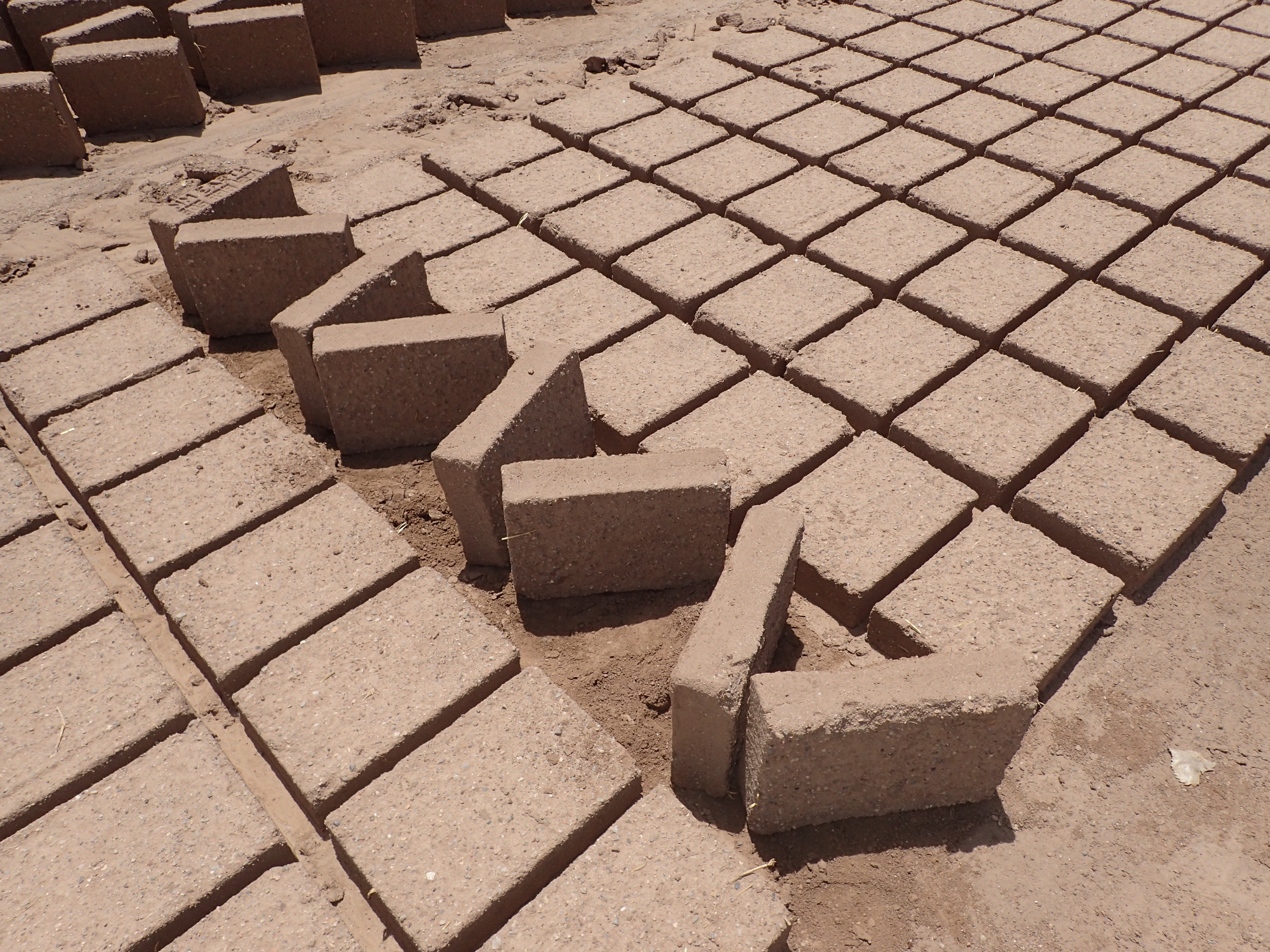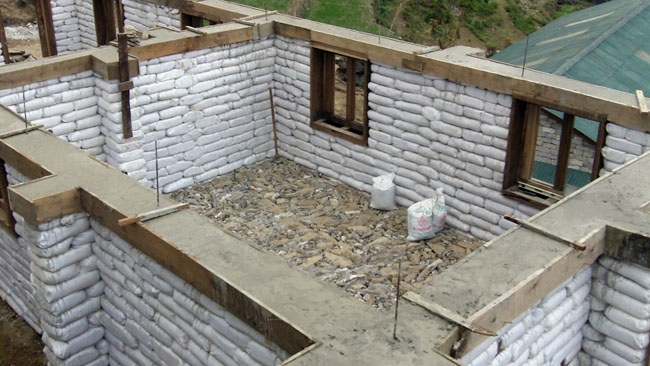
Earthen walls do well in white areas of BSI's map
Minimal Strength
If quake forces are <0.25 g or less, earthen huts protected from water last hundreds of years. They moderate humidity and temperature swings.
Earth techniques include traditional adobe, puddled adobe, cob, rammed earth and compressed blocks and plastered earthbag.
Basics:
More wall than window
Water-resistant footing and moisture break
Walls thick enough for the height
Stiffen long walls with buttresses
Connect walls to lintels, bond beam


